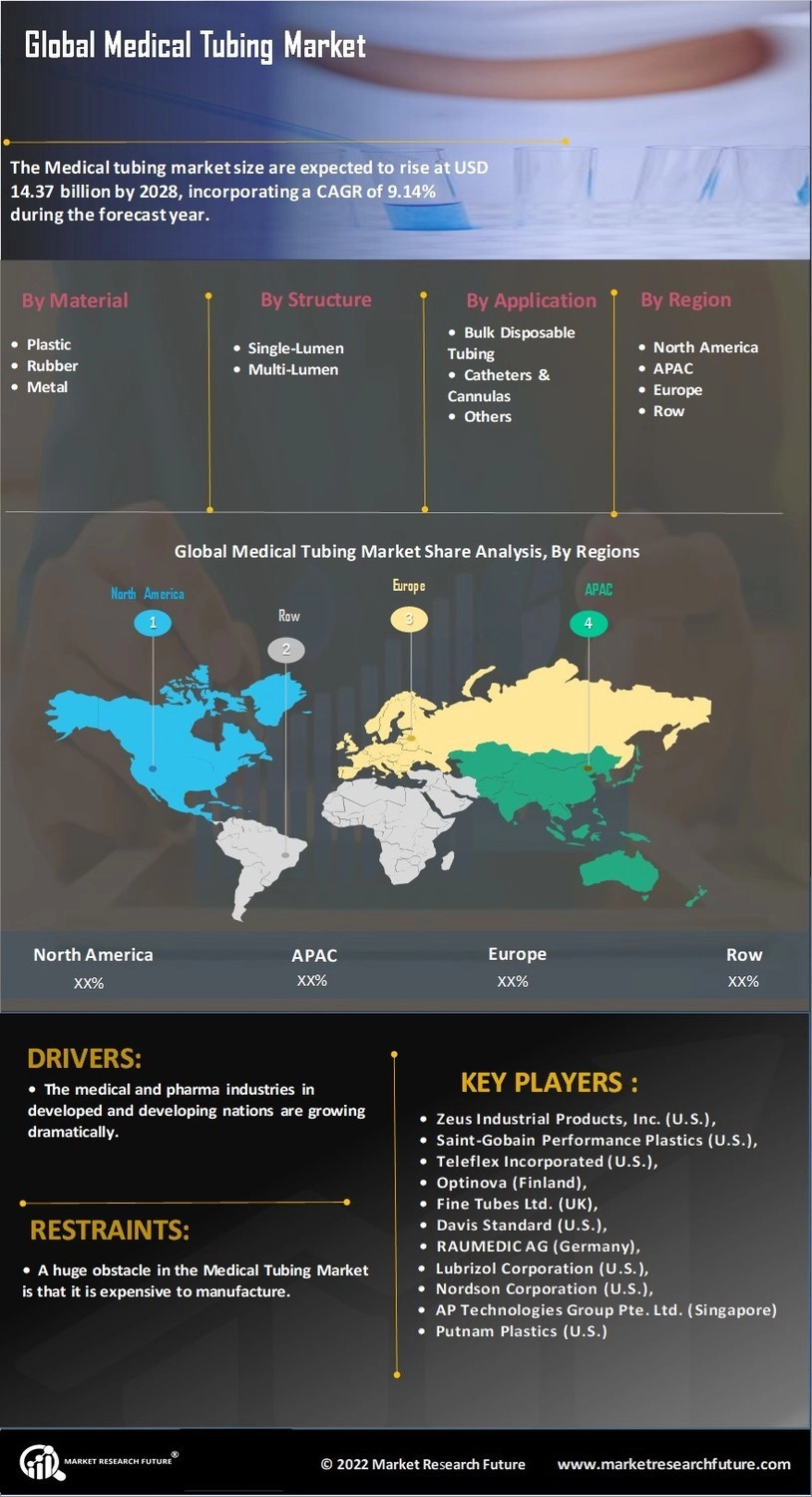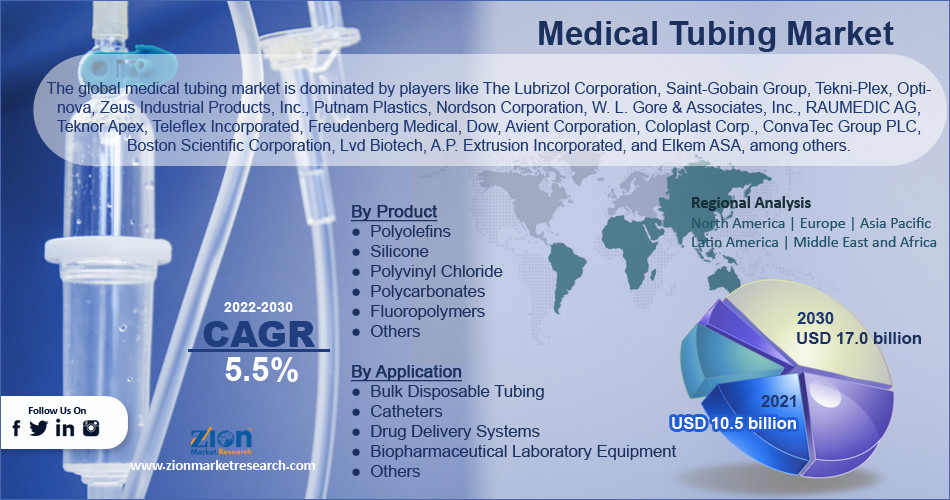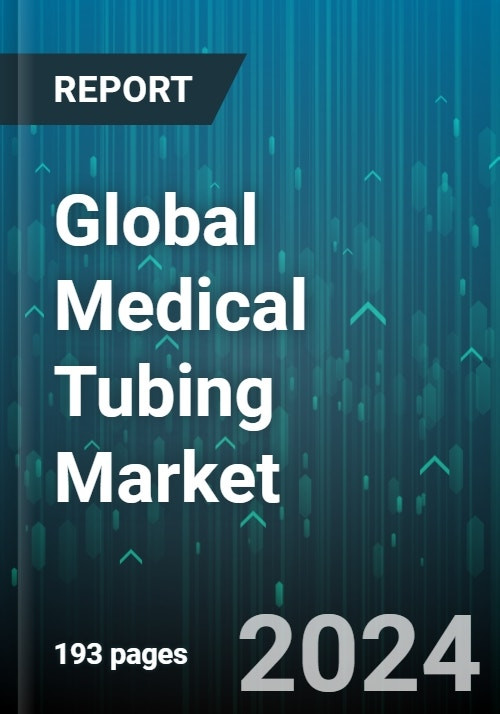The Medical Tubing Market is on the Rise: A Booming Industry Fueled by Respiratory Diseases and Innovation
The medical tubing market is projected to experience a remarkable surge in the coming years, with the market size expected to reach a staggering $21.03 billion by 2028. This rapid growth, fueled by a compound annual growth rate (CAGR) of 12.2%, is driven by a confluence of factors, including the increasing prevalence of respiratory diseases, advancements in medical tubing technology, and the rising demand for medical devices.
Respiratory Diseases Drive Demand for Medical Tubing
The growing burden of respiratory diseases plays a significant role in propelling the growth of the medical tubing market. Respiratory conditions such as asthma, lung cancer, and pulmonary fibrosis necessitate the use of medical tubes in ventilators, leading to increased demand. Data from the Centers for Disease Control and Prevention (CDC) highlights the escalating prevalence of chronic obstructive pulmonary disease (COPD) in the U.S., with cases rising from 4.6% in 2020 to 5.0% in 2021.
The Role of Medical Tubing in Respiratory Care
Medical tubing is an indispensable component of respiratory care. These tubes are used in a wide range of applications, including:
- Ventilators: Medical tubing connects ventilators to patients, enabling them to receive oxygen and support their breathing.
- Tracheostomy Tubes: These tubes are used to provide an airway for patients who cannot breathe on their own.
- Endotracheal Tubes: These tubes are inserted into the trachea to provide a temporary airway.
The increasing demand for medical tubing in respiratory care is a direct consequence of the rising incidence of respiratory diseases.
Innovations in Medical Tubing are Driving Growth
Beyond the increasing prevalence of respiratory diseases, advancements in medical tubing technology are also driving market expansion. These innovations encompass a range of areas, including:
- Biodegradable Materials: The development of biodegradable materials for medical tubing is gaining traction, offering a sustainable and environmentally friendly alternative to traditional materials. Biodegradable tubing is particularly advantageous in applications where removal or bioabsorption is necessary, such as in drug delivery systems.
- Biocompatibility: The focus on biocompatibility is paramount in medical tubing. Biocompatible materials are crucial to ensure minimal risk of adverse reactions and promote long-term patient safety.
- Tissue Engineering: Medical tubing is increasingly used in tissue engineering applications, particularly in the development of artificial organs and regenerative medicine. These applications require tubing with specific properties to support tissue growth and development.
These innovations are enhancing the functionality, safety, and efficacy of medical tubing, making them even more essential in healthcare settings.
Key Players Shaping the Medical Tubing Market
The medical tubing market is characterized by the presence of several prominent companies, each vying to capture a significant share of the market. Some of the key players in the global medical tubing market include:
- Saint-Gobain S.A.
- Freudenberg Medical LLC
- W.L. Gore & Associates Inc.
- Avient Corporation
- Raumedic AG
- Micro-Tek Corp.
- NewAge Industries Inc.
- Axiom Medical Inc.
- NovoSci Corp.
- Vanguard Products Corp.
- Zeus Industrial Products Inc.
- Absolute Custom Extrusions Inc.
- Petro Extrusion Technologies Inc.
- Pexco LLC
- GSH Industries Inc.
- Teleflex Medical OEM LLC
- Putnam Plastics Corporation
- Tekni-Plex Inc.
- Nordson Corporation
- Qosina Corp.
- Vesta Inc.
- Lubrizol Life Science Health
- Grayline LLC
- Trelleborg Healthcare & Medical
- Spectrum Plastics Group Inc.
- Merit Medical Systems Inc.
- Applied Plastics Co.
- Inc., Duke Empirical Inc.
- Biomerics LLC
- Polyzen Inc.
- Resonetics LLC
These companies are actively investing in research and development to create innovative medical tubing solutions that cater to the evolving needs of healthcare professionals and patients.
The Future of Medical Tubing: A Bright Outlook
The future of the medical tubing market appears bright, with continued growth driven by several key factors. The aging global population, the increasing prevalence of chronic diseases, and the rising demand for minimally invasive procedures are all expected to fuel demand for medical tubing.
The Rise of Precision Medicine
Precision medicine is a rapidly evolving field that focuses on tailoring medical treatments to the specific needs of individual patients. This approach often involves the use of medical tubing in personalized drug delivery systems and other specialized medical devices. The growth of precision medicine is likely to create new opportunities for the medical tubing market.
Telemedicine Services on the Rise
Telemedicine services, which enable remote healthcare consultations and monitoring, are gaining popularity. This trend is expected to drive the demand for medical tubing used in remote patient monitoring devices and other telehealth applications.
The Future is Bright: Continued Growth Ahead
As the global healthcare landscape continues to evolve, the medical tubing market is poised for sustained growth. Advancements in technology, the rising prevalence of chronic diseases, and the growing adoption of precision medicine and telemedicine services are all set to contribute to the continued expansion of this market.



















